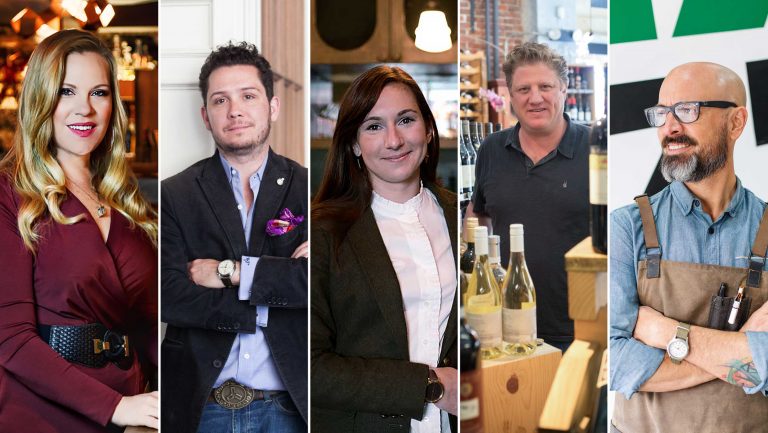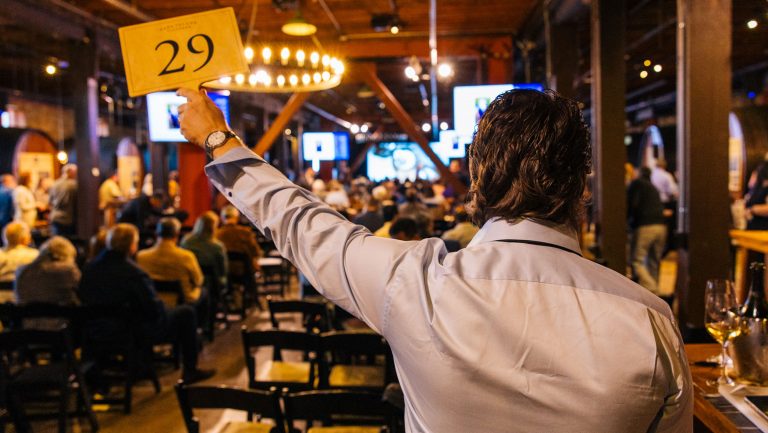Whether working the floor of a restaurant or helping a customer in a wine shop, sommeliers are often called on to describe wine. It’s a task that can be fraught with peril. Sarah Tracey, the wine director at Rouge Tomate and Villanelle in New York City, says she learned this the hard way. “I had a table of 20-something girls,” she says, “and they were asking about a wine that had been aged sur lie. I used the word yeasty to describe it, and they looked horrified.”
Part of the problem is that guests often don’t understand the vocabulary of wine. A guest may state a preference for “dryness” in a wine, when what that person is really describing is the effect of its tannins. Throw in the fact that “cherry” to one person seems like “raspberry” to another, and the process of communicating through tasting notes becomes downright challenging. To minimize misunderstandings, some somms eliminate certain words and terms from their on-the-floor wine discussions altogether.
SevenFifty Daily asked five wine professionals to share which wine descriptors they avoid on the floor, and how they pivot the conversation to better serve their clientele. From all these conversations, a single mantra emerged: When it comes to describing wine to a guest, simpler is better.

Don’t miss the latest drinks industry news and insights. Sign up for our award-winning newsletters and get insider intel, resources, and trends delivered to your inbox every week.
1. Acidity
David Rosoff, managing partner, Triple Beam Pizza, Los Angeles
When it comes to matching food with wine, acidity is an essential component to consider. But for David Rosoff, the word itself is problematic. “Most guests make the puckery ‘acid face’ when they hear that word,” he says. “It sounds like something they don’t want to drink.” To work around this term, David suggests describing the sensations acidity creates, such as “bright” and “lively.” He also encourages his staff to get into the background of each wine whenever possible. “The story behind a wine,” he notes, “is often more important to guests than [vinification] facts and details.”
2. Reduction
Morgan Calcote, general manager and wine director, FIG, Charleston, South Carolina
First impressions in wine are important. But from Morgan Calcote’s experience, notes referring to reduction can give guests a misleading sense of a wine’s true character. “You don’t want to avoid the issue,” she says, “but rather [to] illuminate it.” Calcote suggests explaining the upshot of reductive winemaking rather than using the term itself as a descriptor. To do that, she offers to decant the wine and advises guests that it will simply need air to “show its full promise.”
3. Obscure fruits
Duey Kratzer, owner, Mondo Vino, Denver
Duey Kratzer has observed that using obscure fruits to describe wines is a surefire way to confuse customers. Kratzer encourages the staff at his wine shop to create a conversation around wine so that the subject matter is more relatable. “The last thing you want to do is throw out something so obscure that no one knows what it is,” he says. Instead of taking customers on a virtual walk through the produce aisle, Kratzer encourages his staff to rely on straightforward adjectives when describing tasting notes, such as “bright red fruits” rather than obscure descriptors like “brambleberry” or “lychee nuts.”
4. Dry
Sarah Tracey, wine director, Rouge Tomate and Villanelle, New York City
According to Sarah Tracey, the most problematic word is also among the most commonly used: dry. Since so many people deploy the term in vague ways, Tracey finds it to be an unhelpful starting point. “I try to stay away from it,” she says. Instead, she will steer the conversation toward other qualities people are seeking in a wine, such as light- versus full-bodied, or crisp versus rich. “The best way to come together on this,” she says, “is to give someone a taste of something and see their reaction. You use that as a compass to guide you.”
5. All of them
Jared Hooper, wine director and sommelier, Faith & Flower, Los Angeles
“I avoid wine words and phrases whenever possible,” says Jared Hooper. “Why would you open my Christmas present for me? Why would you tell me something tastes like strawberry when I think it tastes like raspberry?” Rather than get bogged down in technical terms, he finds out what wines his guests typically drink. For example, he’ll ask about the last wine that made them say ‘Wow.’ Then he’ll pair that information with the amount of money they’re willing to spend, and make his recommendations. Establishing a rapport and maintaining a low-pressure tone helps him get guests out of their comfort zone. At that point, he says, “most are willing to try something new.” If pressed to describe a wine, he’ll get creative. “I will describe Gamay as Pinot Noir’s New Jersey cousin: It drives a Camaro, it tells dirty jokes, and it’s a whole lot of fun to hang out with.”

Dispatch
Sign up for our award-winning newsletter
Don’t miss the latest drinks industry news and insights—delivered to your inbox every week.
Kevin Day is a wine writer and photographer based in Colorado and the founder of the wine website Opening a Bottle. He is an Italian Wine Scholar with Highest Honors and a member of the International Association of Culinary Professionals. Follow him on Instagram and Twitter @openingabottle.







